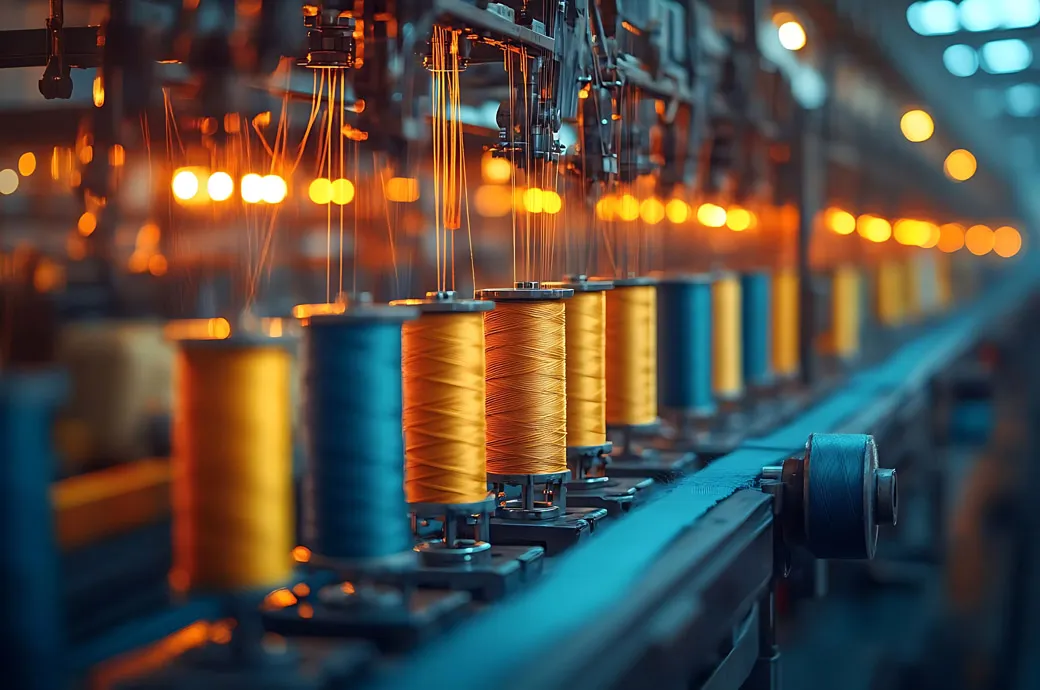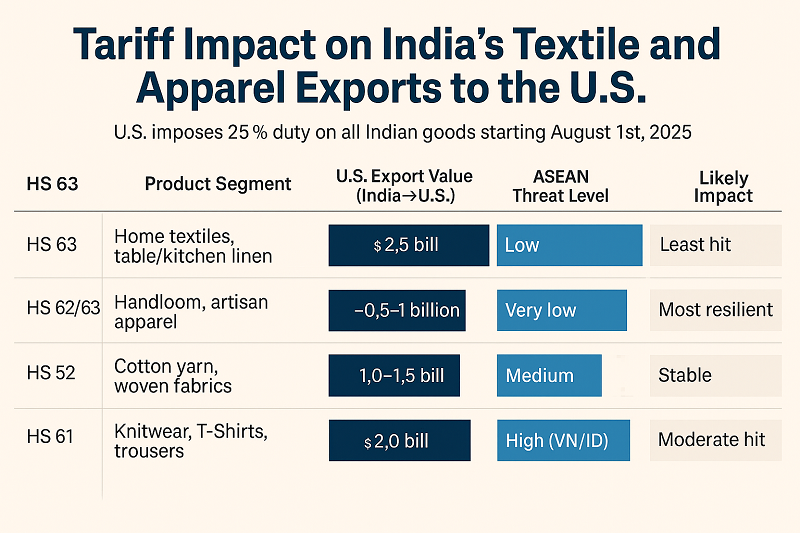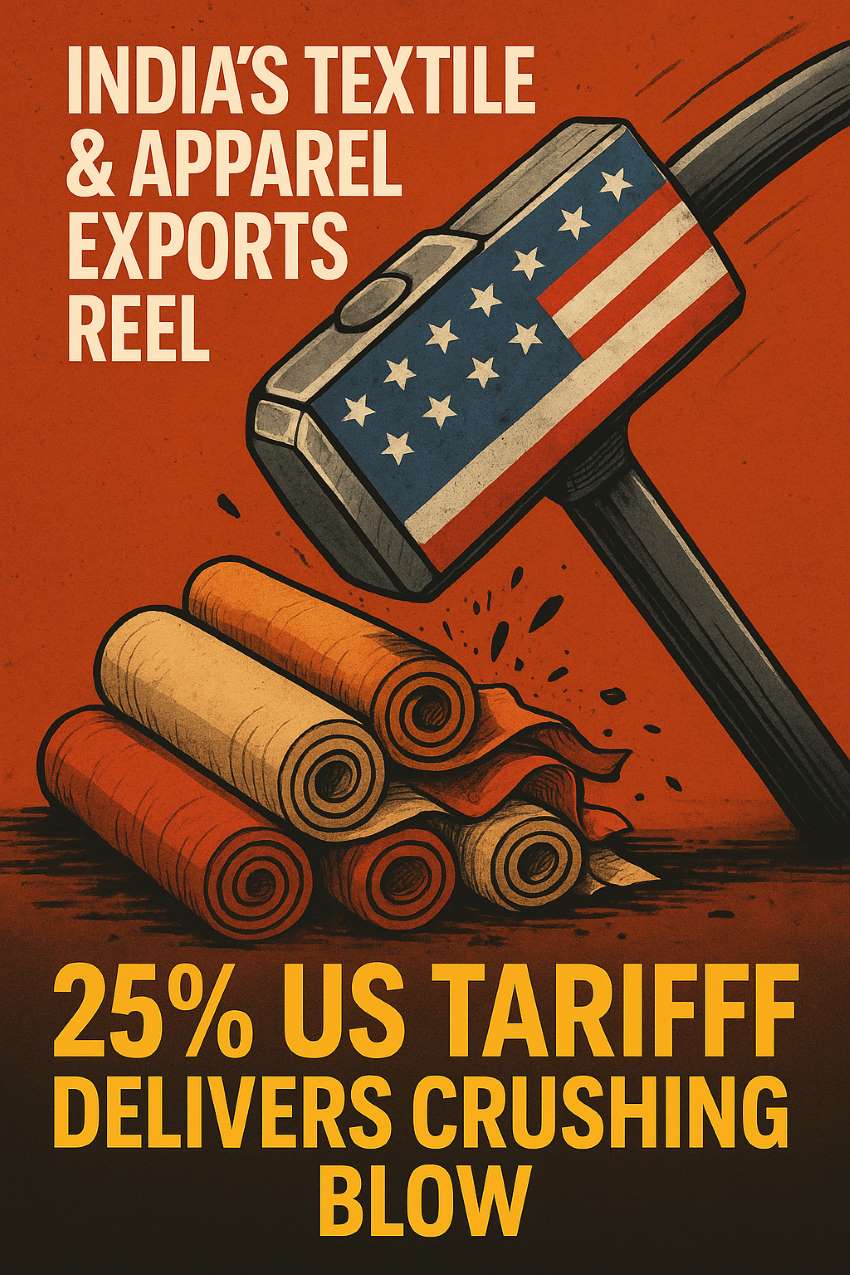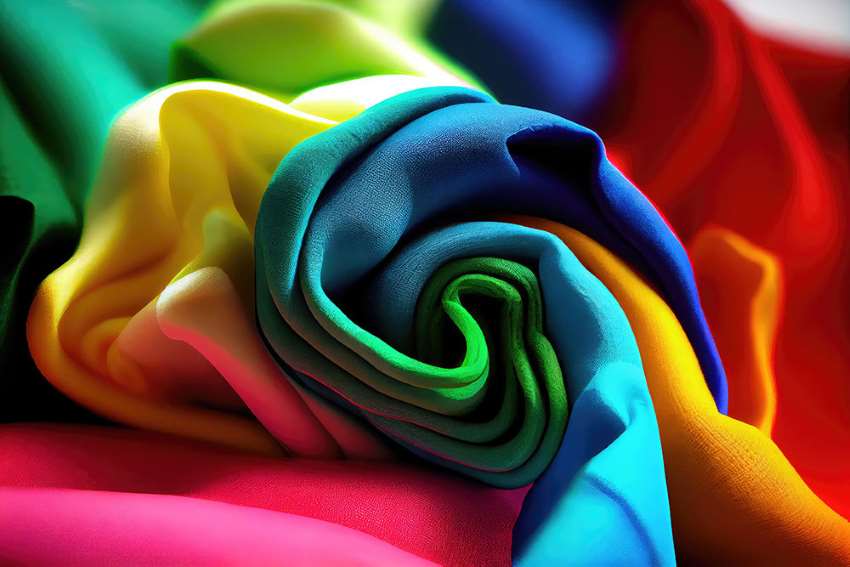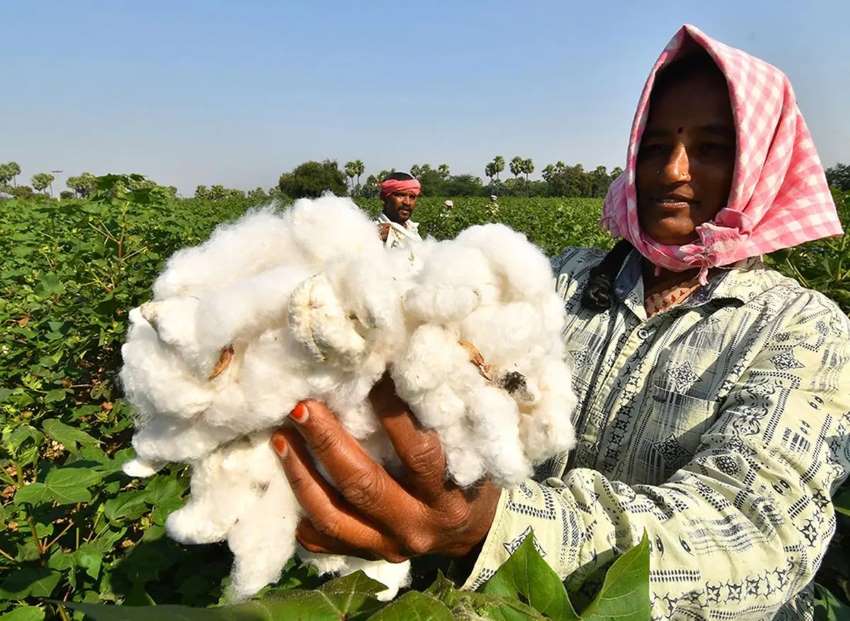FW
Bangladesh hopes to make Canada a key garment export destination. Of Bangladesh's exports to Canada, 96 per cent are apparel items. Between July and March 2014-15, Bangladesh exported goods worth $734.02 million to Canada and imported goods worth $495.80 million in July-February of the same fiscal year.
In fiscal 2013-14, Bangladesh’s exports to Canada were worth $1.1 billion while imports were $585.5 million. Canada has been providing support to Bangladesh to develop workers' skills and improve working conditions in the sector. The country has provided duty-free benefits to Bangladesh since 2003.
The growth rate of Bangladesh’s garment industry has been around 9 per cent over the previous year, which is slightly lower than the past five years' average of around 12 per cent.
Garment makers have been facing challenges of poor infrastructure, political crisis, lower worker productivity and a lack of experience of mid-level management. An inadequate supply of gas and a ban on new gas connections to the factories are the biggest challenges.
In spite of all this the sector is confident of achieving the apparel export target of 50 billion dollars by 2021. Currently Bangladesh is the second largest garment exporting nation after China.
Textile mills in Telengana want at least 50,000 bales of cotton a day to be allocated through e-auction at reasonable market prices. There are a large number of spinning and textile mills in Telengana. They feel the CCI is not offering sufficient cotton to them. The CCI is said to be holding 83 lakh bales of cotton all over India, and if this is so, this will suffice the mills’ consumption for another four to five months.
Telengana has about 10 lakh spindles of which eight lakh run on cotton and the balance on other fibers like synthetic and viscose. Poor availability of cotton is forcing mills to run on a partial basis or to procure from states like Maharashtra or Madhya Pradesh, an unviable option.
Mills in Telengana say cotton lint sales policy adopted by the CCI is not consumer friendly. They say that against a total arrival of about 57 lakh bales in Telengana, the CCI has purchased 50 lakh bales, amounting to 90 per cent of the total arrivals of raw cotton from the state. There has been a huge increase in price of cotton, making the total textile industry unviable.
The Telengana industry is labor and capital intensive, employing thousands of rural women workers.
Synthetics may be moving in on cotton’s market share, but Cotton Incorporated’s latest campaign focuses on the fiber’s style, substance and authenticity. With the tagline ‘Cotton. It’s Your Favorite for a Reason’, the commercial moves away from being celebrity-centric in favor of consumers’ stories of why cotton-based items are their favorites.
Cotton Incorporated conducted extensive consumer research to develop this campaign. The campaign is geared towards the youth of this millennium, which Cotton Inc. calls a generation coming of age and craving authenticity. Designed to remind consumers of cotton’s versatility, the campaign acknowledges the style, comfort, durability and quality of cotton apparel. Featured storytellers represent diverse interests, styles and backgrounds. Each is passionate about telling their stories through their favorite piece of cotton clothing, and showing how seamlessly it fits into their lives.
Cotton Incorporated, a non-profit organisation, aims to increase the demand for and profitability of cotton through research and promotion and to ensure that cotton remains the first choice among consumers in apparel and home products. It was founded in 1970 and is based in the US. It is the research and marketing company for US upland cotton. Supporting offices are located around the globe in Mexico City, Osaka, Shanghai and Hong Kong.
www.cottoninc.com/
The United States Fashion Industry Association (USFIA) has applauded introduction of bipartisan Trade Promotion Authority (TPA) legislation, Bipartisan Congressional Trade Priorities and Accountability Act of 2015. As Julia K Hughes, President of USFIA, TPA points out, it is essential for the conclusion of high-standard, 21st-century trade agreements. In a statement issued here, Hughes said, “The fashion industry applauds the introduction of TPA and urges Congress to pass the legislation as soon as possible so we can see the swift conclusion of the Trans-Pacific Partnership (TPP) and other key trade negotiations.”
The passage of TPA will allow the Obama Administration to conclude the TPP, a potentially groundbreaking agreement for fashion brands and retailers doing business in the Asia-Pacific region, as well as create ambitious trade policy for the future, such as the Transatlantic Trade & Investment Partnership (TTIP), a historic trade negotiation with Europe. TPP and TTIP are especially important for the US fashion industry, which includes textile and apparel brands, retailers, importers, and wholesalers based in the United States and doing business globally.
“Our members not only import products from around the world, but also sell American fashion design around the world, too,” explains Hughes. “By opening new markets in the Asia-Pacific and Europe, these brands and retailers will have new opportunities to create high-quality jobs at home and expand abroad.”
“The passage of TPA, the conclusion of TPP and TTIP, and the renewal of important initiatives like the African Growth & Opportunity Act, the Nicaragua Tariff Preference Level, and the Generalized System of Preferences will help American businesses and consumers as well as boost jobs and the economy in the United States.”
The USFIA is a member of the Trade Benefits America Coalition, a broad-based group of more than 250 leading U.S. business and agricultural associations and companies. It represents the fashion industry, textile and apparel brands, retailers, importers, and wholesalers based in the United States and doing business globally.Founded in 1989 as the United States Association of Importers of Textiles & Apparel with the goal of eliminating the global apparel quota system, USFIA now works to eliminate the tariff and non-tariff barriers that impede the industry’s ability to trade freely and create economic opportunities in the United States and abroad.
Putting the spotlight on exploitation of garment workers in developing world, the 2015 Australian Fashion Report has stated that though it found improvement in condition, Australian fashion companies are still not doing enough to protect the people making their clothes. The report conducted by a Christian aid group, traced the supply chains of of the countries’ major clothes retailers. The report comes almost two years after the deadly Rana Plaza factory collapse in Bangladesh.
Gershon Nimbalker, Advocacy manager for Baptist World Aid Australia, said the collapse pushed the group to research the supply chains. Rana Plaza tragedy was just so huge in the consciousness of consumers and retailers, governments and investors as well that there has been a lot of pressure for companies to change, he said. Based on policies, supply chain traceability, monitoring programs and worker rights, the report graded 219 companies. Brands like the Just group or Best and Less and Lowes or some fast fashion brands like Industry, Ally and Temt, Valley Girl ,-are not doing well at all, he added.
The report also commended companies like K-Mart, Cotton On and the Sussan Group for all improving conditions for its workers in countries including Bangladesh. Overall though, the garment manufacturing industry remains a tough and, at times, brutal employer.
Carolyn Kitto, of representative anti-exploitation group ‘Stop the Traffik’, said the best thing consumers can do is to pressure retailers into sourcing ethically responsible products. They should be asking of their favourite fashion labels and retailers who made my clothes, ‘what do you know about the supply chain? What do you know about human trafficking in the supply chain of these, Kitto said.
The Kingpins show was held in Amsterdam April 15 and 16. Amsterdam is increasingly becoming the denim capital of Europe. Much innovation and new developments were presented at the show disclosing denim novelties for Fall/Winter 2016-17. The new season had skinny fits for men as well as a slight return to denims that don’t employ stretch or employ it without looking like stretch fabrics. For women, flares were back as well as a more feminine version of the boyfriend cut that is tighter at the end and around the hips though always boxy and unisex.
Wintry looks and blends characterised many denim collections. Berto presented various melange effect denims, some employing a percentage of cashmere with selvedge. Denim Valley by Tejidos Royo presented various 100 per cent cotton denims with a woollen optic. Candiani Denim presented various soft touch melange denims that also employ nylon and tencel, though look like formal fabrics.
Orta presented its selection of cozy denims employing up to 20 per cent wool as well as a series of denims with a moleskin effect. Calik opted for a woolly aspect and uneven prints resembling wool surfaces. A series of micro designs and micro weaves were presented by ITV, Berto and Cone Denim. Cone is revamping its fabrics, including special ribbed-woven ones from the 1980s.
www.amsterdamdenimdays.com/kingpins-show-15-16-april/
Italian fashion retailer Benetton Group will double the amount of compensation paid to Rana Plaza Trust Fund. The retailer has been under pressure to increase its payment in the run-up to the second anniversary of the disaster, in which 1,138 workers died and thousands more were injured.
Benetton’s additional payment of $1.1 million adds to a previous payment of $5,00,000. It was one of 29 brands connected to companies operating in the Rana Plaza building.
Benetton was one of the first signatories of the Accord on Fire and Building Safety, which has improved factory safety in Bangladesh in the wake of the Rana Plaza disaster. Now, in addition to applying the Accord globally, the company plans to work with its suppliers to raise workers’ living standards.
The Rana Plaza building collapse in April 2013 shocked the world. There were stories of people amputating their own limbs in order to be freed from the rubble and survive. At least 29 global brands had orders with at least one of the five garment factories in the Rana Plaza building.
N Brown Group, VF Corporation and The Gap have also made contributions as brands who source from Bangladesh but have not had a sourcing relationship with Rana Plaza.
www.benetton.com/
Indian textiles suppliers, participating in a project to improve resource efficiency, cut chemical use in 2014 by 402 tons, says the Stockholm International Water Institute (Siwi). The project, called Sustainable Water Resources (Swar), involved Siwi, Swedish retail brands Indiska, KappAhl and Lindex, their Indian suppliers, the Swedish International Development Cooperation Agency (Sida) and India-based consultant cKinetics.
Over 40 factories from Delhi and Jaipur participated in the project, which involved providing technical consultations to factories to help them improve their chemical efficiency related to washing, dyeing, printing and water treatment. In the past two years, 13,000 factory workers and managers have been trained about how to reduce usage of chemicals in textile manufacturing like choice of materials, storage and handling, and awareness of international programs to phase out hazardous chemicals.
More than half the participating factories will continue to work on their own, continuously communicating their development to their clients in Sweden. Others have joined a network created by Siwi and the three fashion brands to continue education. The project will now expand to China, Turkey, Bangladesh and Ethiopia, while also including many other Indian states.
www.siwi.org
Brandix India Apparel City (BIAC) has partnered with four Chinese players to attract direct investment in home textiles in its facility located at Atchuthapuram mandal in the Vizag district. BIAC signed MoUs with Jiangsu Kingday Textile Co Limited, Zhejiang Hengyuan Chemical Fiber Group, Kunshan Rising Textile and Garment Co as well as Sumec Textile and Light Industry Co during CM N Chandrababu Naidu's visit to China to garner investments for the state.
Spread over1,000 acres, BIAC houses 10 manufacturing units, including UK-based Quantum Clothing, Ocean India, Seeds Intimate Apparel, Pioneer Elastics, Shore to Shore, Vardhman Yarns and Threads, International Trimmings and Labels, Ribest Ribbons and Bows (India), S&S Industries, Screenline Printing apart from three of its own units involved in manufacturing ladies underwear and T-shirts. BIAC also has also developed an effluent treatment plant with a capacity of treating 56 million litres of effluent discharge.
www.brandixapparelcity.com
Huntsman Textile has introduced Novacron XKS HD reactive ink for industrial ink jet printing. The ink achieves very deep shades as well as true black on multiple fibers. Huntsman is a provider of high quality dyes and chemicals to textile and related industries.
The ink is Kyocera-tested and compatible with Kyocera high-speed printer heads commonly used by printer manufacturers. The product delivers a high-performance result with minimal printer maintenance or downtime and minimizes ink waste. It also offers up to 50 per cent more color intensity than some other reactive inks available in the market. Its color-fastness makes it ideal for industrial digital printing of apparel and home textiles.
Industrial digital printing faces the challenge of delivering superior quality and optimum print reliability while effectively managing cost and environmental impact. Novacron addresses these demands and delivers the full effect of digital designs – intense, vivid colors and top quality finishing.
Novacron can be combined with Huntsman’s Prepajet Unitm pre-preparation auxiliary for exceptional color, printing efficiency and cost savings. The special polymer structure of the Prepajet auxiliary prevents ink migration on the fabric surface enabling optimum sharpness, definition and color intensity. It is easy to apply and remove and is suitable for use on all fibers.
www.huntsman.com/textile_effects/

